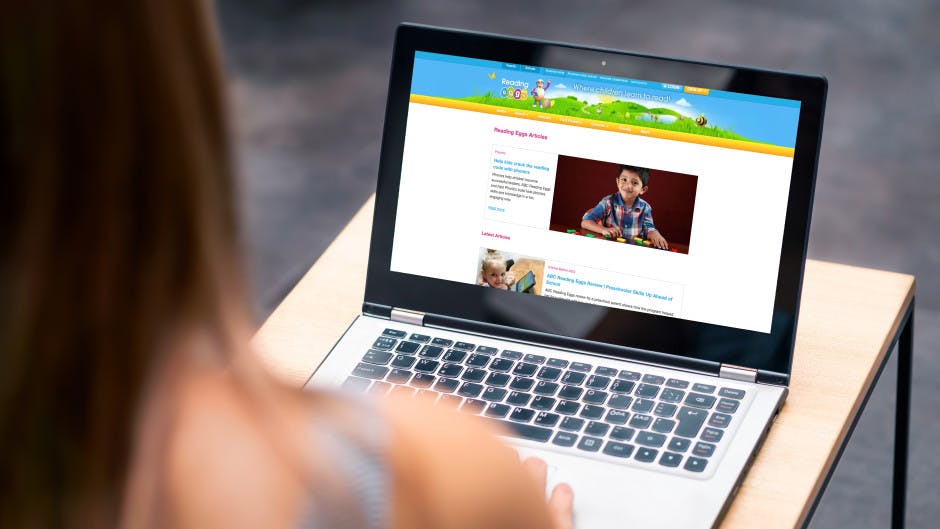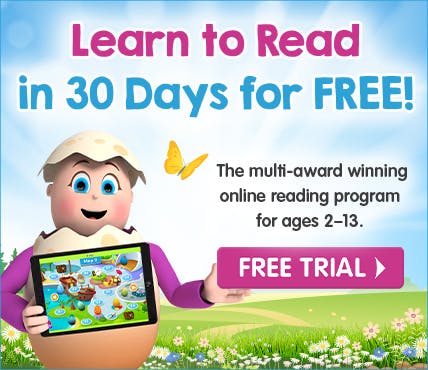


Kids Phonics Games

What is Phonics?
Phonics is the understanding of how letters are linked to the individual sounds in words, called phonemes. It’s the knowledge of how letters and sounds relate creating their appropriate sound and spelling pattern. This is known as the alphabetic principle, and a thorough understanding of this, especially by playing phonics games, goes a long way toward helping kids learn how to read.
Synthetic and Analytic phonics
There are two approaches to phonics instruction – analytic and synthetic.
Analytic phonics instruction teaches children to recognise entire words by sight. Once they have learnt a word by sight, they are then taught to recognise the individual letters and phonemes that make up a word.
In contrast, synthetic phonics instruction emphasises an understanding of the alphabetic principle and encourages kids to thoroughly explore the letters of the alphabet and the sounds that each letter or letter combinations make. While the learning of sight words is necessary, particularly those high-frequency words that cannot be easily broken into smaller units of sound and sounded out, synthetic phonics emphasises teaching kids how to approach words bit-by-bit rather than swallowing them whole.
Kids Phonics Games
Some argue that it’s easy to spend so much time on phonics games and activities that reading is actually neglected. This certainly occurred in the past, and there is always a danger of this occurring in any educational setting that does not have kids reading real books as its goal. What is the purpose of the phonics games that a kids play in school or home? Is it just to fill the time? Is it to get a shiny star stuck on the page? Or is it to help kids fill their reading toolboxes with the tools they need to be able to open up books and read books to their heart’s content?
With that great goal in mind – kids reading real books – here are some great phonics games with which to engage your child.
Play
Playing with your child is actually enormously significant to their language development. As you play with them, in whatever activity, whether it’s building Lego, block towers, train tracks, playing with dolls in their dollhouse, or drawing, be intentional about using language. This can feel stilted and unnatural at first, but it becomes easier with time. There are few different types of ‘talk’ you can use – this helps you have a means of discussing things if you’re struggling:
Parallel Talk – This focuses on what the child is doing. You simply report back to the child what they are doing. For example, ‘You are pushing the blue train along the train track’, or ‘you are building a high block tower’. In this way you link language to what they are doing, thereby making direct links between words and things in the mind of the child.
Descriptive Talk – This focuses on the object. You provide words and descriptors for the things your child is playing with. For example, you might say, ‘the red play dough is squishy’, or ‘the blocks tumble down to the ground’.
Self Talk – Using this kind of talk, you focus on what you are doing. ‘I’m drawing a purple butterfly with green polka dots’, or ‘I’m rebuilding the block tower now’.
This type of talk may seem unnecessary, but it actually helps kids develop their own language skills, and the more words they have in their memory banks, the better readers that they will be.
Sing
Singing is often overlooked as a valid means of developing the language ability of children. But it shouldn’t be. Nursery rhymes were de rigueur once upon a time, and for very good reason. Anytime that you mix words, meter, and music together, you actually end up with an incredibly powerful learning tool. Words alone are powerful, but add rhythm, meter, and melody, and they are are even more so.
So sing to your child. Sing with your child. Teach them your favourite songs, and learn the ones that they enjoy. Here are a few to jog your memory to help you get started:
The Eensy Weensy Spider
Twinkle Twinkle little Star
Mary had a Little Lamb
It’s Raining it’s Pouring
Read
And, of course, we cannot neglect the fine art of reading. In concentrating on phonics games that help develop a child’s understanding of phonics, it must never be done at the expense of actually sitting down and reading books to and with children. Reading to your child and having fun doing so teaches them that books are an enjoyable activity. It also provides them with book-handling skills and a model for the fluent reading of a text. Children pick up a lot about how to read simply by listening to a parent or caregiver read to them.
The understanding of phonics for kids is very important to their reading ability. While emphasis on phonics can, at times, overshadow that of reading, the goal for any phonics game is to get kids reading real books.
Phonics in Reading Eggs
Reading Eggs uses a synthetic approach to phonics with lessons that help kids map each letter or letter combination with the appropriate sound. Each letter of the alphabet is introduced in its own lesson, allowing kids to focus on the correspondence between a particular letter and its appropriate sounds, thus reinforcing the alphabetic principle.
Lessons in Reading Eggs successively build upon each other so that by Lesson 9, kids read their first book. All activities in the programme, including the phonics games, have as their focus the reading of real books. From Lesson 9 onwards, kids read an e-book in each lesson. All of the books dovetail seamlessly with the content of their respective lessons; therefore, all phonics instruction that kids receive and engage with in a lesson is put to immediate use reading real texts. The lessons are highly engaging, and reward kids for every lesson they complete. This keeps kids immersed in the learning environment, and motivated to continue reading.


